We hope all dangers may be overcome; but to conclude that no danger may ever arise, would itself be extremely dangerous.
—Abraham Lincoln, Lyceum Address
Is American democracy eroding? For many scholars, the answer is a resounding yes.Footnote 1 Public support for democracy may be slipping, as Foa and MounkFootnote 2 argue. The commitment of political leaders to democratic norms may also be declining, as Levitsky and Ziblatt (Reference Levitsky and Ziblatt2018) contend, threatening the stability of liberal democracy. These threats are seemingly being exacerbated at both the mass and elite level by partisan polarization (Fishkin and Pozen Reference Fishkin and Pozen2018) and a cultural backlash that has fueled authoritarian-populist movements in the United States and Europe (Norris and Inglehart Reference Norris and Inglehart2018).
It is too early to say whether the long-term quality of democracy in the United States will suffer. Our political system and civil society retain formidable sources of resilience such as wealth and democratic longevity. But signs of potential degradation are everywhere.
We present original survey research we conducted among the general public and among political science experts to monitor potential democratic erosion in the United States. Our empirical findings are fourfold. First, although there is still broad public consensus over democratic priorities, Americans are deeply divided over the quality of their democracy. Second, that divide is growing. Third, many of the principles that the public most values about democracy differ from those prioritized by the experts. Fourth, the pace and sequence of democratic erosion identified by experts over the last year-and-a-half broadly fits with narrative accounts of democratic backsliding in other parts of the world. Taken together, the patterns we uncover underscore why polarization presents a unique challenge to democratic resilience, and illuminate why the numerous transgressions against democracy identified by experts since the Trump administration took office have seemingly not provoked commensurate public outrage.
Democracy and the Compound Consensus
In order to examine the quality of American democracy, the severity of threats to it, and the sources of its resilience, we conducted the Bright Line Watch (BLW) expert and public surveys. These surveys measure the perceived importance of key democratic principles (described later) and the extent to which they are perceived as being upheld in the United States.
This measurement approach was inspired by the theoretical framework developed by Weingast (Reference Weingast1997), who links citizens’ values, beliefs, and perceptions directly to democratic stability. Harkening back to Locke (Reference Locke1689), Weingast underscores that constraints on governments will be ineffective—mere parchment barriers—unless they are backed up by a societal commitment to police and defend them.Footnote 3 By this account, two critical conditions must be met for politicians to obey limits on their authority and hence for democracy to be self-enforcing:
• First, there must be agreement among citizens that a particular principle or right is so crucial that its violation would amount to a fundamental breach of the rule of law.
• Second, there must be consensus among citizens that a transgression has occurred.
The conditions for this compound consensus are demanding. For self-enforcement to take place, perceptions of a transgression of such bright lines must be shared not only by those citizens who are directly affected but also by third parties, possibly including rivals, who recognize a threat to their own rights and interests (Weingast Reference Weingast1997, 251-252). Self-enforcement effectively constrains political authority only when a consensus motivates third-party actors to police violations by political officials. As Weingast puts it, “if citizens hold different views about limits on the state—or if they are unwilling to defend these limits—then the sovereign can violate these limits and retain sufficient support to survive. In this case, limits on the sovereign are not self-enforcing” (Weingast Reference Weingast1997, 246).
This theoretical framework helps us consider how the American political system might limit a president who frequently signals his disdain for legal, constitutional, and normative constraints. Moving from theory to the real world, of course, the precise level of societal consensus required to constrain the president becomes an empirical question. Moreover, the challenge for any contemporary application of Weingast’s theory is that the potential set of rights and principles a political leader might violate is vast (Dahl Reference Dahl1973). The original study focuses on taxation, confiscation of property, and religious liberty during England’s Glorious Revolution. The potential set of principles one might regard as essential for American democracy today is more extensive, including not only free and fair elections, but whether the playing field remains level, which itself hinges on a variety of other rights and protections (Coppedge et al. Reference Coppedge, Gerring, Altman, Bernhard, Fish, Hicken, Kroenig, Lindberg, McMann, Paxton, Semetko, Skaaning, Staton and Teorell2011).
We thus designed the BLW surveys to measure the status and perceived importance of this broader set of formal institutions and informal practices that might be regarded as essential to democracy in the contemporary United States. Over the past year-and-a-half, our surveys have enabled us to track: (a) the degree of consensus about democratic institutional priorities that exists among experts and the public and (b) the degree of consensus that exists within each group that transgressions of important democratic principles have occurred. Together, these two dimensions point toward potential arenas of coordination in defense of democracy, but they also indicate obstacles to such coordination. Thus they provide a nuanced picture of sources of resilience—and vulnerability—in American democracy.
The next section of this paper describes the surveys we use to measure democratic priorities and evaluations of democratic performance. We then present data on priorities and performance assessments from expert respondents and from representative samples of the American public. Among the public, we compare the attitudes of supporters and opponents of President Trump, and we illustrate how assessments have changed during his first year-and-a-half in office. Respondents in the public sample agree much more about what matters for democracy than they do about whether those ideals are being fulfilled or violated.
Motivation
We begin by considering the broad evidence of decline in the status of U.S. democracy. Our May 2017 survey of political scientists at American universities asked respondents to rate the quality of U.S. democracy on a 0-to-100 scale at nine different periods in the country’s history from 1800 to 2015. In each of the six expert surveys we conducted from February 2017 to July 2018, we also solicited a comparable 0-to-100 rating for U.S. democracy at the time of the survey.
Figure 1 shows the mean responses from these surveys, with 95% confidence intervals, plotted against analogous ratings of U.S. democracy from the Varieties of Democracy (V-Dem) project, which is the current state of the art in cross-national and over-time ratings of democracy and its components (Coppedge et al. Reference Coppedge, Gerring, Henrik Knutsen, Lindberg, Skaaning, Teorell, Altman, Bernhard, Steven Fish, Cornell, Dahlum, Gjerløw, Glynn, Hicken, Krusell, Luhrmann, Marquardt, McMann, Mechkova, Medzihorsky, Olin, Paxton, Pemstein, Pernes, von Römer, Seim, Sigman, Staton, Stepanova, Sundström, Tzelgov, Wang, Tore, Wilson and Ziblatt2018; Pemstein et al. Reference Pemstein, Marquardt, Tzelgov, Wang, Krusell and Miri2018).Footnote 4
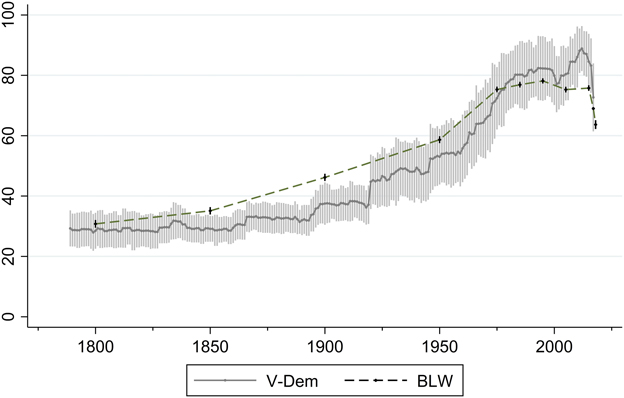
Figure 1 Ratings of U.S. democracy from V-Dem and Bright Line Watch
The retrospective ratings from our experts correspond closely with those of V-Dem’s analysts. Both report steady increases in the quality of U.S. democracy during the nineteenth and twentieth centuries. After registering high scores in recent decades, both show sharp declines in their most recent observations, which cover 2016 and 2017 for V-Dem and 2017 and 2018 for BLW.Footnote 5
It is useful to consider why both sets of experts provided the ratings they did. As we write elsewhere about the Bright Line Watch Expert Survey Wave 2 (2017),
The period from 1850–1900 saw the Civil War, the abolition of slavery, the Civil Service Act, and the beginning of the Progressive Era reforms, but also the abandonment of Reconstruction and the establishment of Jim Crow in the South (1850–1900). The period from 1900–1950 saw the ratification of the 19th Amendment to the Constitution guaranteeing women’s voting rights as well as the vast expansion of the federal welfare state under Roosevelt’s New Deal and the first achievements of the civil rights movement. The time lapses in our survey question shortened at this point. Between 1950 to 1975, the country experienced the high water mark of the civil rights movement, including landmark civil rights legislation in 1957 and 1964 and the Voting Rights Act of 1965. The average rating for US democracy rose more steeply during this 25-year span than it did on average during the prior 50-year intervals.
Ratings for U.S. democracy rose correspondingly. Subsequently, as they approach the top of the scale, the assessments level off somewhat over the next four decades between 1975 and 2015, a period that spanned administrations with distinct governing ideologies ranging from Ronald Reagan and George W. Bush to Bill Clinton and Barack Obama. The most recent ratings, however, show a sharp decline under the Trump administration.Footnote 6
Together, the BLW surveys and V-Dem ratings provide the most systematic evidence to date of the serious concern among experts about the current state of American democracy. We turn now to a closer examination of the areas in which BLW experts perceive erosions in performance.
How We Measure Democratic Principles and Performance
The core of the BLW surveys is a list of 27 statements of democratic principles.Footnote 7 Other research—such as the foundational Przeworski et al. (Reference Przeworski, Alvarez, Cheibub and Limongi2000) study of the effects of economic development on regime change—usefully employs a thin, election-centered definition of democracy. Our interest in identifying the nature and scope of potential democratic erosion in the United States requires a different approach. We consider a broad array of principles that contribute to the overall stability and performance of American democracy. These allow us to identify potential threats to democracy, which rarely manifest en masse against a political system as a whole, but rather through the piecemeal erosion of its pillars (Bermeo Reference Bermeo2016; Levitsky and Ziblatt Reference Levitsky and Ziblatt2018).
We present the full set of statements, which we have grouped into categories, below.Footnote 8 These have been measured in six surveys, Wave 1 (February 2017), Wave 2 (May 2017), Wave 3 (September 2017), Wave 4 (January 2018), Wave 5 (April 2018), and Wave 6 (July 2018).
All our surveys are internet-based. In all waves, we draw on a sample of expert respondents. We collected e-mail contacts for all faculty listed on the websites of all political science departments at U.S. universities from which at least one member attended the 2016 American Political Science Association annual meetings. We sent e-mail invitations to these faculty (removing from the list in each wave any faculty who request removal or whose invitations bounced back in the previous wave). Those who agree to participate are directed to an online survey conducted using Qualtrics software.Footnote 9 Waves 3–6 additionally include a representative sample of the American public assembled by YouGov.Footnote 10 The designs of the surveys are summarized in table 1.
Table 1 Bright Line Watch surveys: Waves 1 to 6
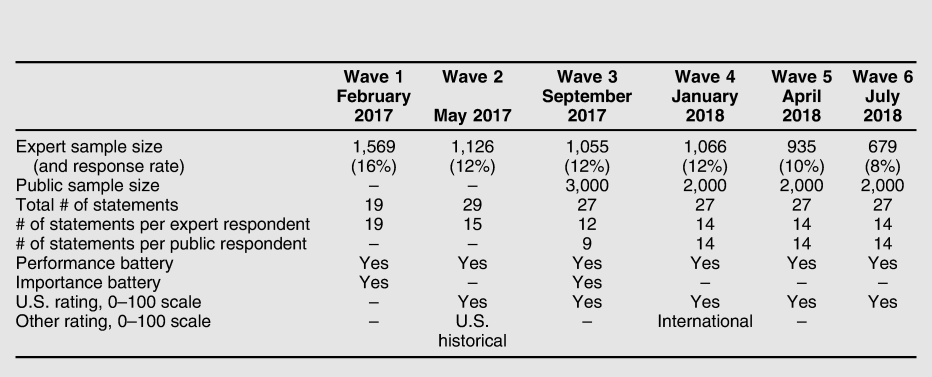
The statements of democratic principles at the center of all our surveys are as follows:
Elections
• Elections are conducted, ballots counted, and winners determined without pervasive fraud or manipulation.
• Citizens have access to information about candidates that is relevant to how they would govern.
• The geographic boundaries of electoral districts do not systematically advantage any particular political party.
• Information about the sources of campaign funding is available to the public.
• Public policy is not determined by large campaign contributions.
• Elections are free from foreign influence.
Voting
• All adult citizens have equal opportunity to vote.
• All votes have equal impact on election outcomes.
• Voter participation in elections is generally high.
Rights
• All adult citizens enjoy the same legal and political rights.
• Parties and candidates are not barred due to their political beliefs and ideologies.
• Government protects individuals’ right to engage in unpopular speech or expression.
• Government protects individuals’ right to engage in peaceful protest.
• Citizens can make their opinions heard in open debate about policies that are under consideration.
Protections
• Government does not interfere with journalists or news organizations.
• Government effectively prevents private actors from engaging in politically-motivated violence or intimidation.
• Government agencies are not used to monitor, attack, or punish political opponents.
Accountability
• Government officials are legally sanctioned for misconduct.
• Government officials do not use public office for private gain.
• Law enforcement investigations of public officials or their associates are free from political influence or interference.
Institutions
• Executive authority cannot be expanded beyond constitutional limits.
• The legislature is able to effectively limit executive power.
• The judiciary is able to effectively limit executive power.
• The elected branches respect judicial independence.
Discourse
• Even when there are disagreements about ideology or policy, political leaders generally share a common understanding of relevant facts.
• Elected officials seek compromise with political opponents.
• Political competition occurs without criticism of opponents’ loyalty or patriotism.
In each survey wave, we measure performance by presenting respondents with a randomly generated subset of statements (except for the initial wave, when all statements were seen by all respondents) and asking, for each, “How well do the following statements describe the United States as of today?” with the following response options:
• The U.S. does not meet this standard.
• The U.S. partly meets this standard.
• The U.S. mostly meets this standard.
• The U.S. fully meets this standard.
• Not sure.
In Waves 1 and 3, prior to the performance battery, we asked participants “How important are these characteristics for democratic government?” with the following response options for each statement:
• Not relevant. This has no impact on democracy.
• Beneficial. This enhances democracy, but is not required for democracy.
• Important. If this is absent, democracy is compromised.
• Essential. A country cannot be considered democratic without this.
Waves 2, 4, 5, and 6 omitted the importance battery.Footnote 11 In Wave 2, we instead asked respondents to rate the overall quality of U.S. democracy at nine historical dates using a 0–100 scale, while in Wave 4 we asked for ratings of current democracy in twelve countries other than the United States on the same 0–100 scale. In each survey wave, after completing the U.S. performance battery, we ask respondents to rate the overall quality of democracy in the United States at present.Footnote 12
Testing for a Consensus on Democratic Priorities
Which features of democracy do experts and citizens most value and to what degree are those values shared between groups?
Figure 2 shows the percentage of respondents in our expert and public surveys who rated each principle as either essential or important (as opposed to unimportant or merely beneficial) to democracy.Footnote 13, Footnote 14 The statements are listed in descending order of rating by experts. Ratings are substantially correlated between the groups (r=.77), yet consensus between experts and the public tends to be stronger around the principles that experts rated as less important and weaker around many of the principles that experts prized more. A clear exception to this is fraud-free elections, on which both groups place the highest value. As Fearon has noted,
Citizens may have disparate views of the government’s performance, but whether elections are held according to schedule is publicly observable. The institution of commonly understood electoral rules and procedures thus allows the citizen to credibly threaten mass protest if the ruler does not provide them with the means of aggregating their diverse observations (Fearon Reference Fearon2011, 1662).
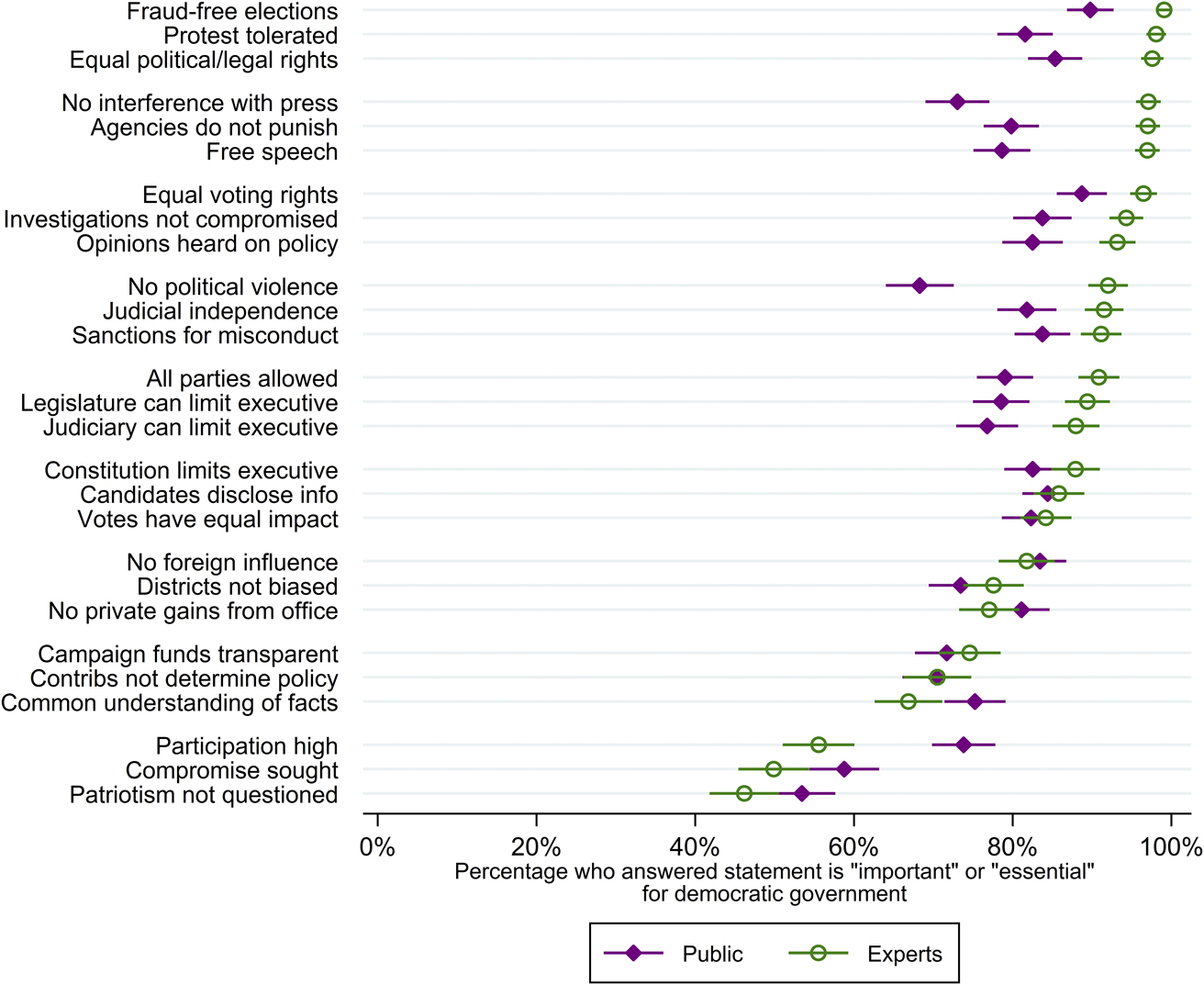
Figure 2 Expert and public responses to “How important are these characteristics for democratic government?”
Similarly, most experts (96%) and the public (89%) agree on the importance of equal voting rights, sanctions for misconduct (91% experts, 84% public), and constitutional limits on the executive (88% of experts, 83% of the public).
As we move lower in the figure, there is also agreement between experts and the public about the importance of elections being free of foreign influence (82% of experts, 83% of the public), as well as several additional principles related to voting and accountability. Both groups tend to place institutional checks, such as judicial independence, and the ability of the courts and legislature to check the executive somewhere in the middle of the pack. Among experts, the secondary status of these principles may reflect recognition that the system of checks and balances embodied in the U.S. Constitution represents only one of the many possible institutional designs among democracies (Lijphart Reference Lijphart1977; Shugart and Carey Reference Shugart and Carey1992; Powell Reference Powell2000; Elkins, Ginsburg, and Melton Reference Elkins, Ginsburg and Melton2009). Experts value institutional checks more highly than does the public as a whole, whereas among principles less valued by both groups, expert assessments tend to be lower. In addition, both groups concur that many of the informal norms of political behavior—a common understanding of facts, that politicians seek compromise, and that they do not impugn the patriotism of their opponents—rank lower in importance among our set of democratic principles.
However, experts and the public differ in the perceived importance of many basic rights and protections. Almost every expert perceives the First Amendment rights to protest (98%) and of freedom of the press (97%) to be as essential as free and fair elections. But these views are less widely shared among the public (82% for the right to protest, 73% for freedom of the press). Similar gaps pertain for free speech (97% experts, 79% public), the principle that agencies do not punish political opponents (97% to 80%), and for the principle of protection from political violence, which 92% of experts rank as essential or important versus only 68% of the public.
Taken together, the gaps between experts and the public over what matters most in a democracy may shed light on a puzzle that has perplexed observers of the administration: Why have events that provoked outrage from the media and other elites not generated a greater public response? A simple answer that emerges from our data is that the disparity in outrage between elites and ordinary Americans, which is lamented by many in academia and the mainstream media, tracks some of the main differences we find over democratic priorities.
For example, the First Amendment principles that are being threatened by behavior such as the president’s threats to open up libel laws are not as important to the public as they are to our experts or to other elites.Footnote 15 Along the same lines, only two-thirds of the public view the government’s ability to thwart private actors from engaging in politically motivated violence or intimidation as important. Perhaps this is why Trump’s poll numbers remained fairly steady in the wake of the violence in Charlottesville, VA, despite widespread elite condemnation of the president saying that “I think there is blame on both sides” and “very fine people on both sides.”
Among the public, how much agreement is there on which principles of democracy matter the most? Recall the first criterion for the compound consensus in defense of democracy. It is not that citizens hold the same values as elites, or experts, but that there are values that the public broadly shares. As one approach to answering this question, we examine whether there are shared democratic principles among supporters and opponents of President Trump.
Our surveys show substantial alignment across Trump supporters and opponents on democratic priorities. Figure 3 separates respondents by whether they approve or disapprove of President Trump’s job performance. The markers indicate the percentage of each group who rate each statement of principle as important or essential for democracy. The statements are listed in descending order of perceived importance among respondents overall (i.e., the percentage of Americans who rate the principle as essential or important in the population as a whole). The horizontal space between points on each principle indicates divergence between Trump supporters and opponents.
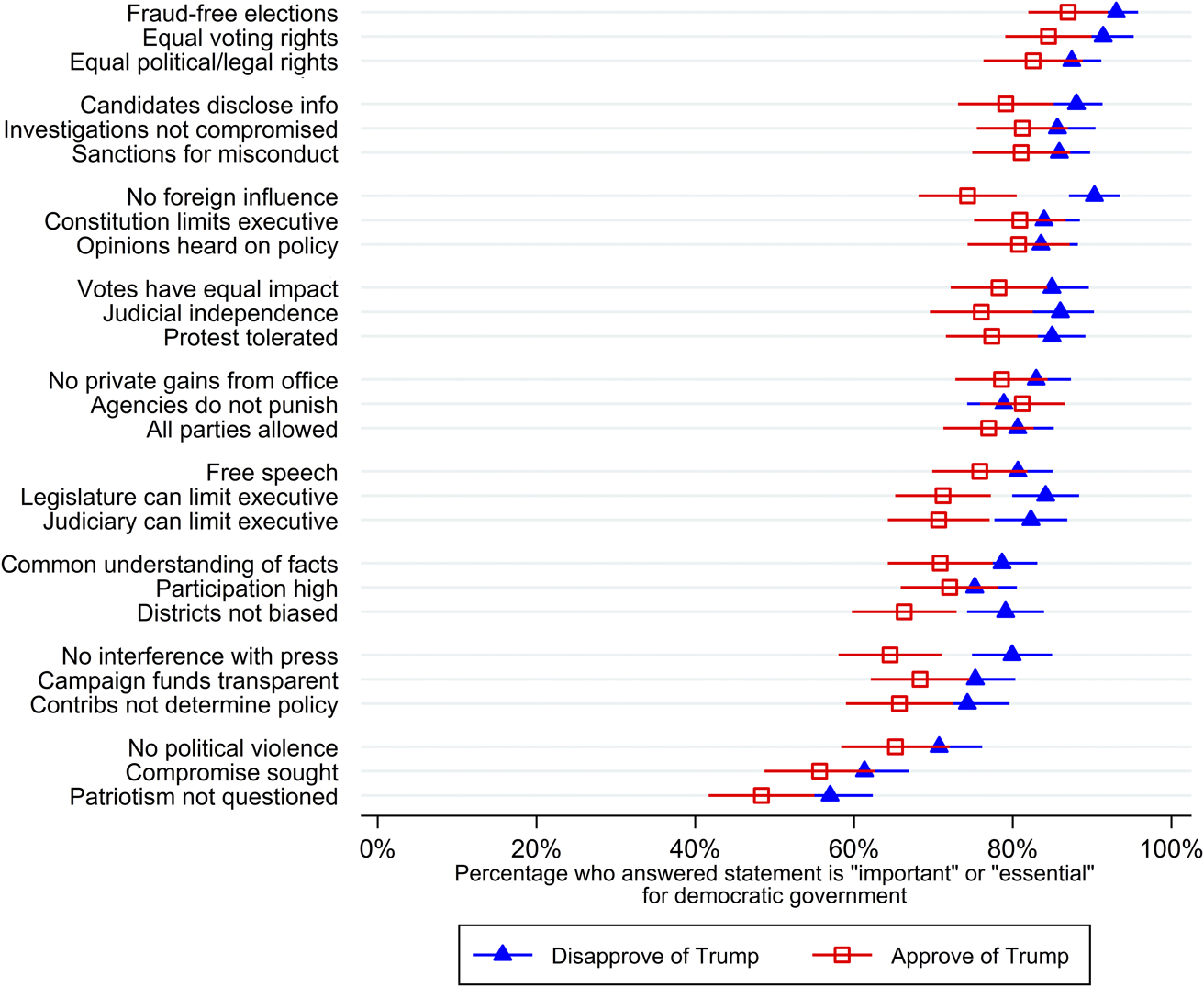
Figure 3 Responses from Trump approvers and disapprovers to “How important are these characteristics for democratic government?”
We find first that the Trump supporters and opponents are roughly aligned on the vast majority of principles. Although there are some statistical differences—opponents place a significantly higher value than supporters on 12 of the 27 principles—substantively, the differences are generally small. For 22 of 27 principles measured, the gap between Trump supporters and opponents is less than 10 percentage points. Second, with the exception of one principle (that opponents’ patriotism should not be questioned), a majority in both groups ranked every principle as important or essential to democracy, suggesting some support for Weingast’s first condition for self-enforcing democracy.
Still, there are some noteworthy differences between Trump opponents and Trump supporters. The greatest polarization is on principles related to elections and institutional checks and balances. First, perhaps reflecting divisions over the Russia investigation and its role in the 2016 election, Americans are split on the principle that elections must be free from foreign influence: Trump opponents exceed supporters on this principle by 16 percentage points. Trump opponents are also far more concerned about bias in electoral districts: the gap here is 13 percentage points. Their discontent likely reflects ongoing animus over prominent GOP gerrymanders in some states and a broader pattern in which Democratic seat shares lag vote shares in Congressional elections (Chen and Rodden Reference Chen and Rodden2013; McGann et al. Reference McGann, Anthony Smith, Latner and Keena2016).
We also find relatively large gaps between Trump supporters and opponents on principles related to checks and balances and constraints on the executive branch, including judicial independence, judicial and legislative limits on the executive, and interference with the press. Many Trump supporters seem to share the president’s hostility toward the media: only 65% deem a free press important for democracy (versus 80% for Trump opponents). Trump opponents in turn are far more concerned with Congress and the courts checking executive authority and with foreign influence.
The differences in values across these two groups may be more situational than intrinsic. Our survey does not allow us to examine this possibility directly, but previous polls by Pew show a clear partisan reversal over time in support for presidential power between Democrats and Republicans (Pew 2017). In 2016, under a Democratic president, 66% of Democrats said increasing presidential power was too risky, a figure that increased to 87% under President Trump. Republicans conversely became less skeptical, with 65% saying increasing presidential power was too risky in 2017 compared with 82% in 2016.
Nevertheless, Trump supporters and opponents show roughly equal commitment to constitutional limitations on the executive branch in our survey. Fully 84% of Trump critics and 81% of Trump supporters view this core constraint on the president as important or essential for democracy. Insofar as this principle captures the broader classically liberal concept of limited government, there is some evidence that the American public still meets the first criterion for self-enforcing democracy—a near-consensus on some core democratic principles. What about the second criterion? Is there any consensus or broad agreement on how U.S. democracy is performing?
Identifying Bright Lines in American Democracy
A societal consensus about the nature of limits on government is necessary, but not sufficient, for self-enforcing democracy. Citizens must also agree on which actions cross bright lines that should trigger a coordinated response. If they do not agree that transgressions against democratic principles are occurring, then even unanimous agreement on which priorities matter will not rein in would-be autocrats.
We begin by considering expert and overall public perceptions of U.S. democratic performance, then evaluate the prospects for a compound consensus within each group, and finally analyze differences in perceptions between Trump supporters and opponents.
Figure 4 shows the percentage of experts and the public who rated the United States as mostly or fully meeting each standard in July 2018. The statements are listed in descending order of performance ratings by experts. There is wide variation across principles in the share of experts who regard the U.S. as performing well. More than 80% of experts regard U.S. elections as open to all parties and similarly high percentages regard the rights to protest and to freedom of speech to be protected. But less than 10% regard electoral districts as unbiased or perceive elected officials as seeking compromise or common understanding with opponents.
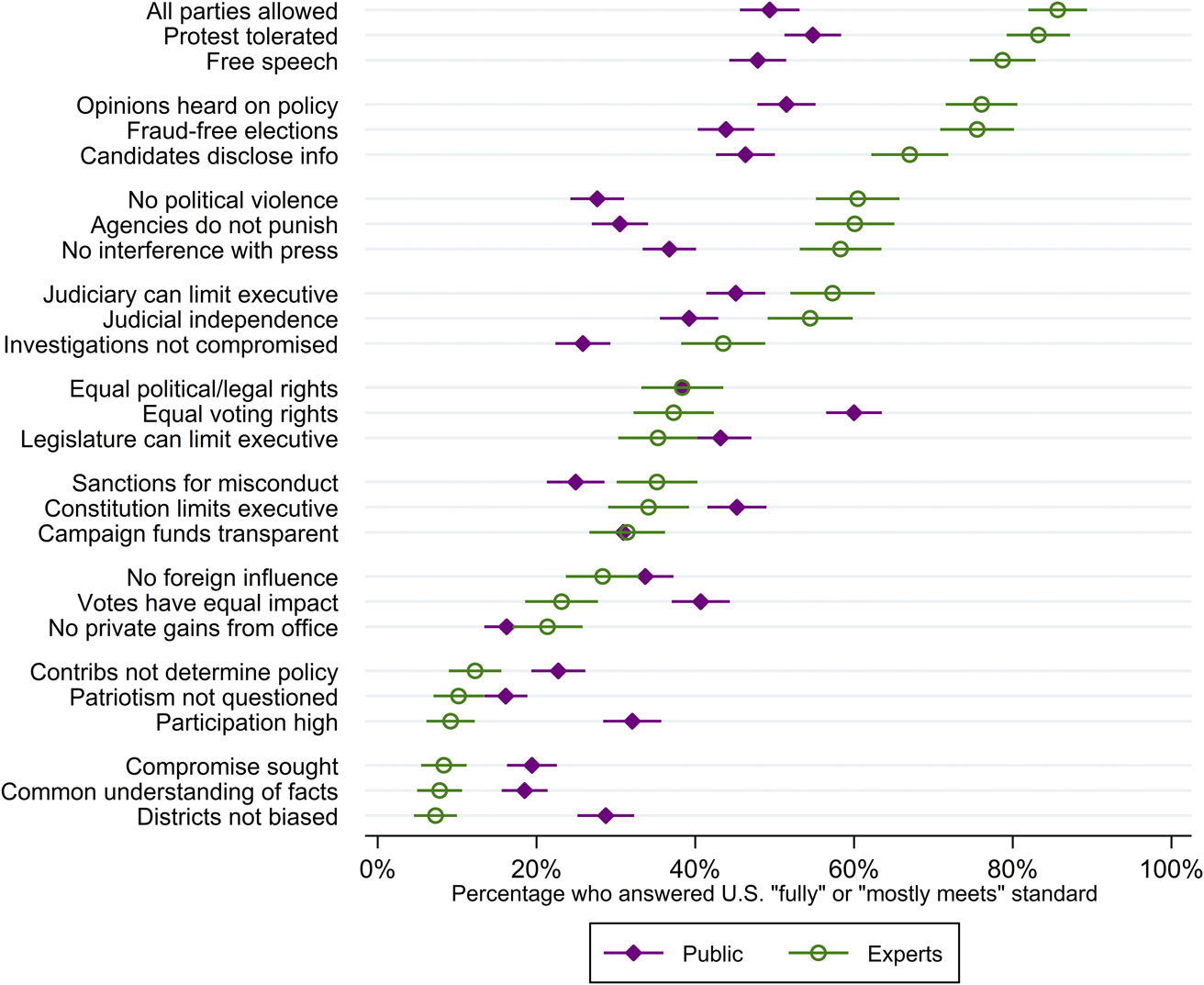
Figure 4 Experts and public responses to “How well does the statement describe the U.S. today?”
The range of performance assessments among the public is more compressed. Some of the same items are situated near the top and bottom of the performance list as for experts.Footnote 16 Openness to all parties, freedom to protest, free speech, and the ability of citizens to make their opinions heard all rank high; behavioral norms, such as seeking compromise, respecting opponents, and reaching common understanding of facts, rank low. Of course, as Levitsky and Ziblatt make clear, these norms eroded well before our surveys began (Levitsky and Ziblatt Reference Levitsky and Ziblatt2018). For example, in the early 1990s, Newt Gingrich’s political action committee instructed Republicans to refer to Democrats as “anti-flag,” “anti-family,” and “traitors” (Levitsky and Ziblatt Reference Levitsky and Ziblatt2018, 148).
There are also noteworthy differences between our experts and the public at large. Among the public, the highest-performance item is equal voting rights (60%), which our experts rated much lower (37%). Conversely, only 44% of public respondents regard U.S. elections as fraud-free compared to 76% of experts. Gaps of similar magnitudes (30% points or more) appear on the principle that no parties are barred from competing, government protects against political violence, free speech is protected, and agencies do not punish.
Next, we search for potential bright line principles that are both widely regarded as important and widely perceived as being violated. Our search is inspired by the core idea that a defense of democracy hinges on a compound consensus of principles. We combine information on democratic priorities from the previous section with the assessments of performance for each group across our 27 statements. In general, the data indicate that little overlap exists between potential bright line candidates for experts and the public.
For both experts (figure 5) and the public (figure 6), we plot each principle by the percentage of respondents who rate it as essential or important to democracy against the percentage who rate the U.S. as mostly or fully meeting the standard. Among both groups, we observe a positive relationship between importance and performance—they tend to rate U.S. democracy higher on principles that they value the most.
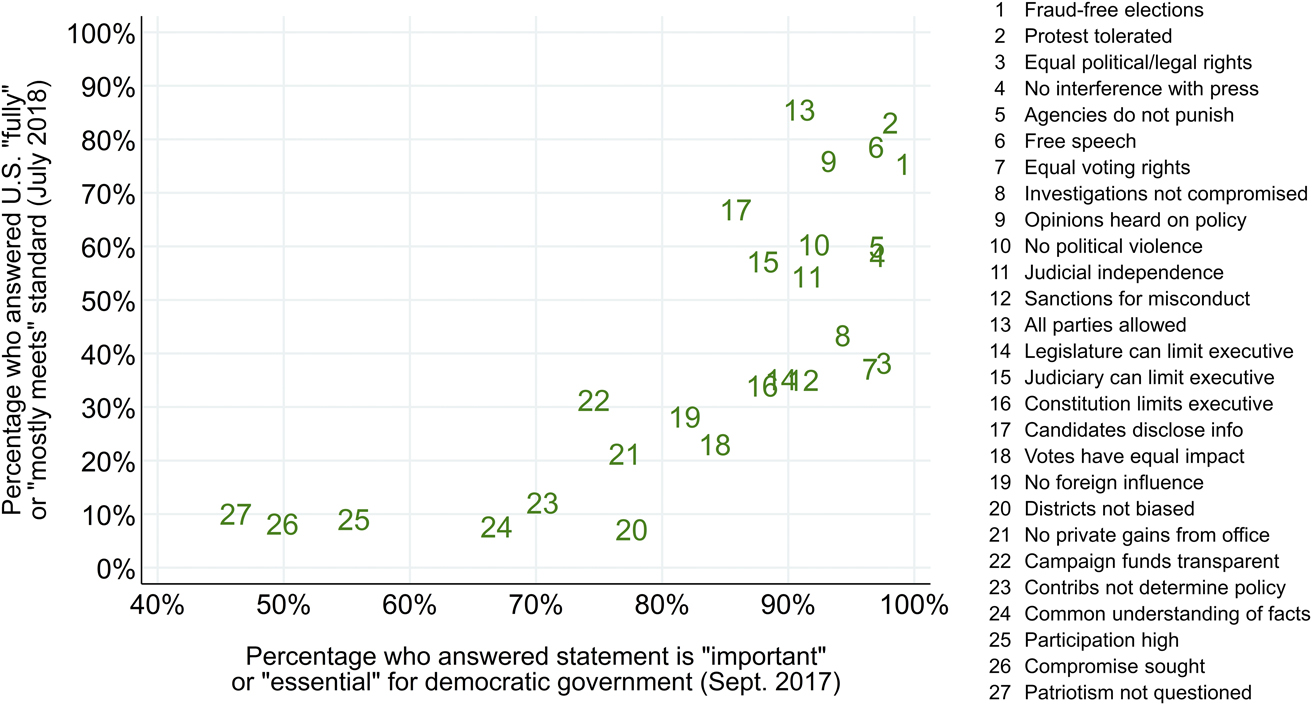
Figure 5 Importance versus performance: expert sample
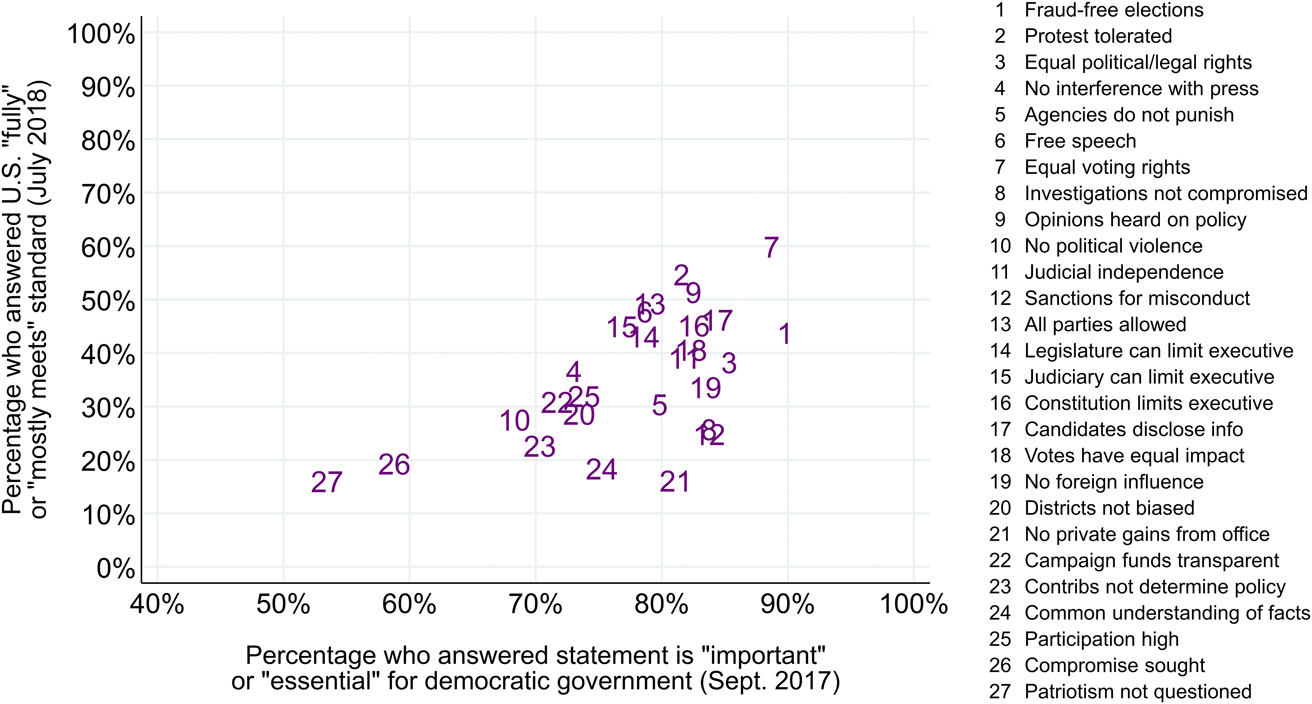
Figure 6 Importance versus performance: public sample
The items that fall into the lower-right sector of the plot are the most likely bright-line candidates. These are principles that are highly valued but which are widely regarded as being betrayed. They therefore represent potential candidates for a coordinated defense of democracy.
Starting with experts (figure 5), the widest gaps between importance and performance are on political/legal equality (#3) and equality of voting rights (#7). Equal political, legal, and voting rights are among the values that experts view as most important, but only about 40% regard the United States as meeting those standards. Two further principles that experts value, but on which they rate performance to be particularly dismal, are votes having equal impact (#18) and districts being unbiased (#20). For experts, then, the most striking betrayals of democratic principles are on issues of equality and fairness. In addition, there is a cluster of principles related to accountability and constraints on the power of officials—sanctions for misconduct (#12), legislative checks on the executive (#14), and constitutional limits on the executive (#16)—that experts widely regard as important and as areas of poor democratic performance.
Among the general public (figure 6), the strongest candidates for bright-line principles are related to political accountability, not equality or electoral fairness. Specifically, the three principles that are viewed as both important and areas of low performance are that government officials do not use public office for private gain (#21), that they are sanctioned for misconduct (#12), and that investigations into potential misconduct are not compromised by politics (#8).
Breaking down public performance further to explore the degree of consensus over performance among rival groups, figure 7 presents performance evaluations for our democratic principles among respondents who approve and disapprove of President Trump. The items are listed in descending order of performance ratings among the general public. We observe that gaps between Trump supporters and opponents in perceived performance are far smaller for bright-line candidate principles (from figure 6) than among those that cluster closer to the diagonal: 5 percentage points for whether investigations are politically compromised, 6 percentage points for whether there are private gains from public office, and 12 percentage points for sanctions of misconduct.Footnote 17
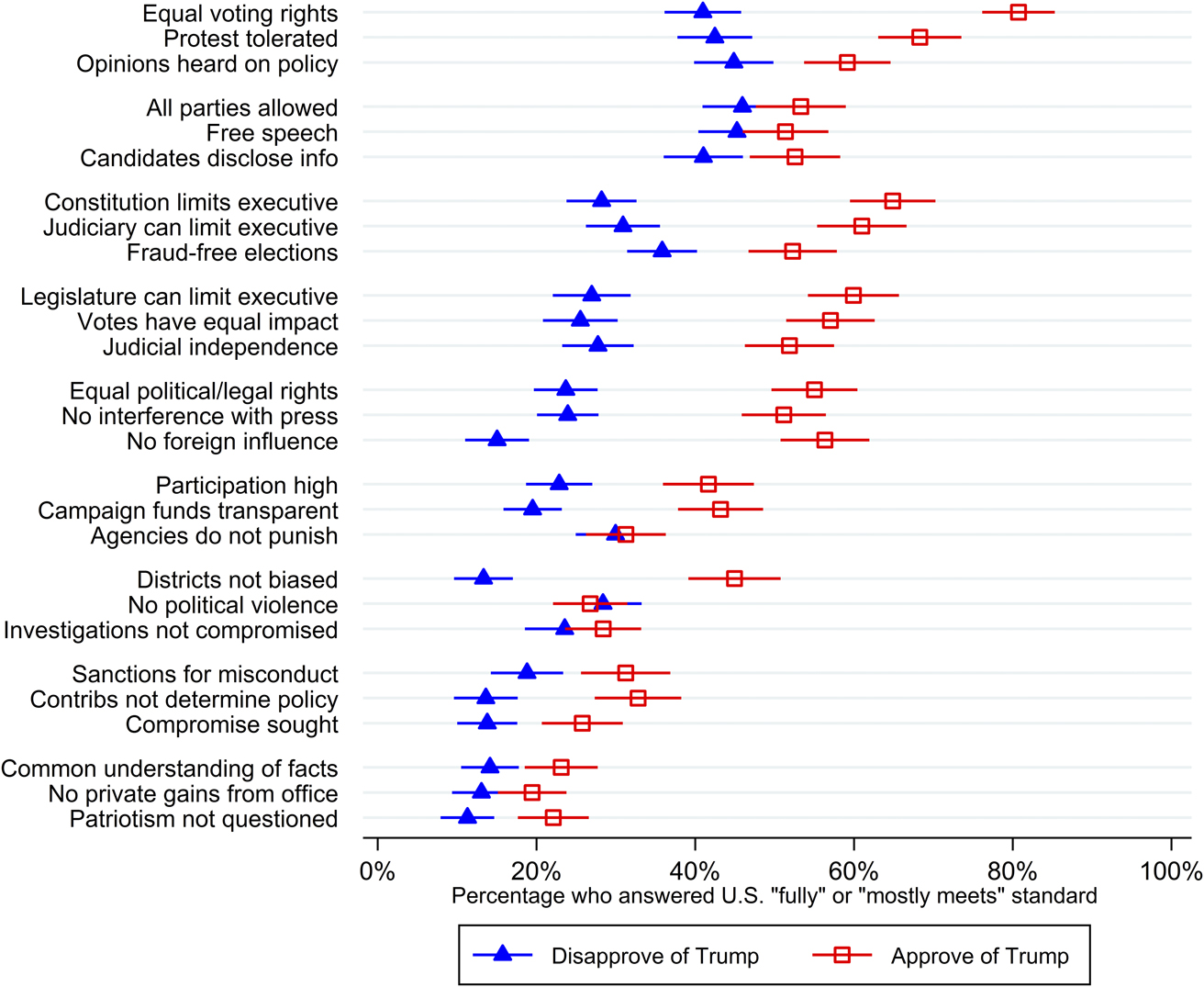
Figure 7 Responses from Trump approvers and disapprovers to “How well does the statement describe the U.S. today?”
On many other principles, we see huge gulfs between the president’s supporters and opponents. More than 30 percentage points separate the groups on no foreign influence on campaigns, equal legal and voting rights, votes counting equally, legislative limits on the executive, and no electoral district bias. Similarly, we find a 37 percentage-point performance gap for the core principle of constitutional limits on the executive.
In general, we find that the public is most polarized over U.S. democratic performance precisely on the principles that stand out as potential bright lines in the expert surveys. Thus, not only do the public and experts disagree on many democratic priorities, but the areas of greatest concern to political scientists are typically the most divisive among the public. The sole exception is sanctions for misconduct, which appears in the lower right quadrants for both experts and public.
In sum, there is little overlap between the potential bright line candidates for experts and the public. What little common ground we do find is in the area of accountability of public officials—in particular, that they are sanctioned for misconduct. Our data also reveal that divisions within the broader public over the Trump administration are translating into divisions over whether basic democratic principles are being violated. If a compound consensus across citizens is to emerge, our surveys suggest that the most promising areas of public coordination will be on principles related to the accountability of high government officials, and not around basic rights and protections, electoral fairness, or equality among citizens.Footnote 18
The Recent Trajectory of American Democracy
Perceptions of democratic performance are dynamic. Over the past year-and-a-half, experts’ appraisals of American democratic performance have declined. Divides among the public have also deepened, including in their views of principles of democracy that we have identified as bright-line candidates. Neither of these trends bodes well for American democracy.
Since we started conducting surveys, for instance, expert perceptions of democratic performance have declined significantly on 12 of our 27 principles.Footnote 19 Figure 8 compares the percentage of expert respondents saying that the United States “mostly meets” or “fully meets” each standard when we first measured the principle in early 2017 and our survey in July 2018.Footnote 20
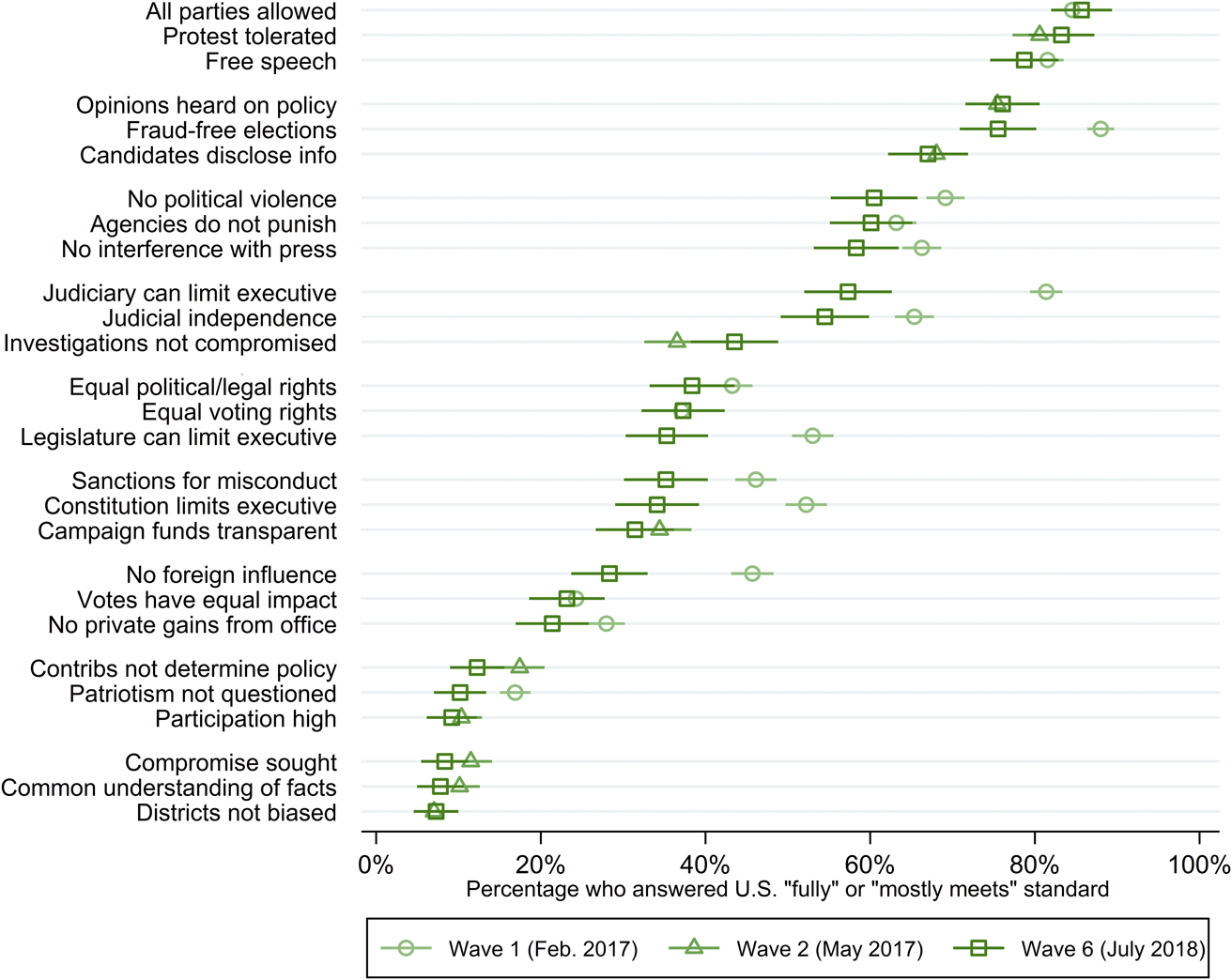
Figure 8 Expert assessments of U.S. democratic performance: Changes from first query (February or May 2017) to July 2018
The path of opinions over time that our surveys reveal is broadly in line with a growing scholarly consensus that democratic erosion—as opposed to regime transitions by coup—happens piecemeal. The pace of erosion varies sharply across the range of principles. The biggest declines in our experts’ views across this period was in checks on the executive. Specifically, confidence in judicial limits on the executive declined by 24 percentage points from when we initially measured them in February 2017 to July 2018; perceptions of effective legislative and constitutional checks also fell by 18 percentage points across this time period. This pattern of changes in the United States parallels that of several other countries in which democracy is under stress. The steady decline of institutional constraints on executives—in contrast to dramatic coups and power grabs—has characterized other recent cases of democratic erosion, including Hungary and Poland. In those countries, popularly elected leaders began to subvert democracy by “capturing the referees” (Levitsky and Ziblatt Reference Levitsky and Ziblatt2018, 81).
In the first year-and-a-half of the Trump presidency, however, experts have also become more concerned about foreign influence on elections and, alarmingly, fraud-free elections. In February 2017, fraud-free elections was the principle on which the largest share of experts, 88%, viewed the United States as performing well. The number dropped in July 2018 to 76%.
Figure 9 lists our principles in descending order of the change in expert assessments from Wave 3 to Wave 6 for “fully meets”/“mostly meets” responses, with 95% confidence intervals around estimates for the size of the shift.Footnote 21 In this ten-month window, we observe no statistically significant improvements in ratings among experts (the principle that comes the closest is “candidates disclose information”) and significant degradation on sixteen principles.
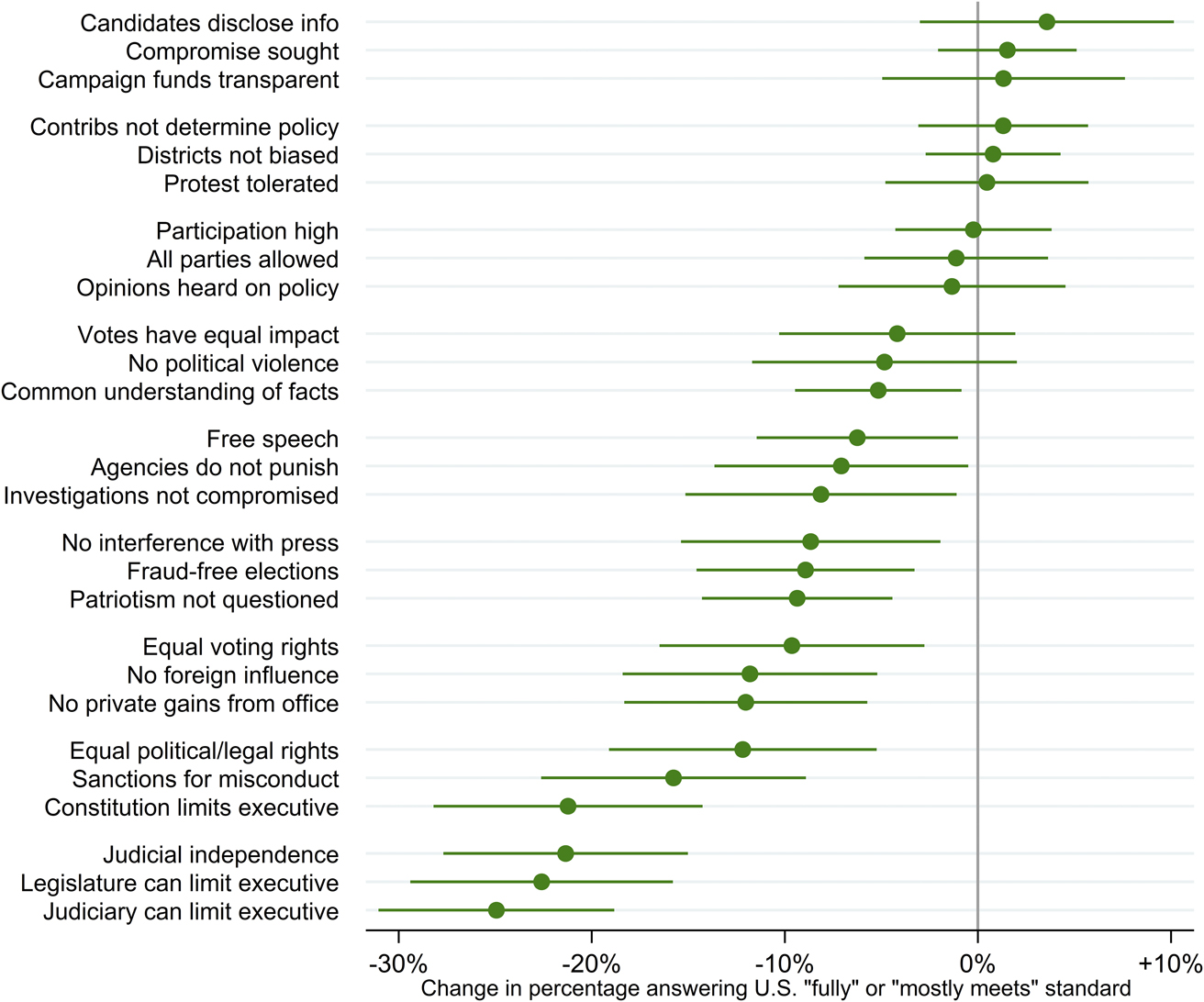
Figure 9 Changes in expert ratings of performance: September 2017 to July 2018
In accordance with our observations provided here, principles related to institutional checks and balances experienced the largest declines. Following a series of resignations and indictments of campaign and government officials and other startling events and policies, expert judgment in the ability of Congress or the Constitution to constrain the power of the executive and in the independence of the judiciary all eroded sharply. The percentage of experts who viewed the United States as fully or mostly meeting these standards fell by more than 20 percentage points, while confidence in judicial checks on the executive plummeted by 25 points. The period from September to July also saw declines of more than 10 percentage points in confidence that all citizens enjoy equal legal and political rights, that public officials do not make private gains from office, that elections are free from foreign influence, and that officials are sanctioned for misconduct.
Turning to the public sample, the decline in performance assessments over the same period has been even more uniform, albeit somewhat less dramatic, than among experts, as figure 10 illustrates. The portions of our public samples who see the United States as fully or mostly meeting democratic standards has declined on every democratic principle we measured. The drops are statistically significant in 22 of 27 cases. As was true of the experts, the public registered some of the biggest drops in areas related to the courts. Confidence that the courts can check the executive and that the elected branches respect judicial independence fell by 14 and 17 percentage points, respectively. Assessments of protections for free speech and against interference with the press declined by the same amounts. The public also showed substantial declines in another five areas, including fraud-free elections and equal legal and political rights.
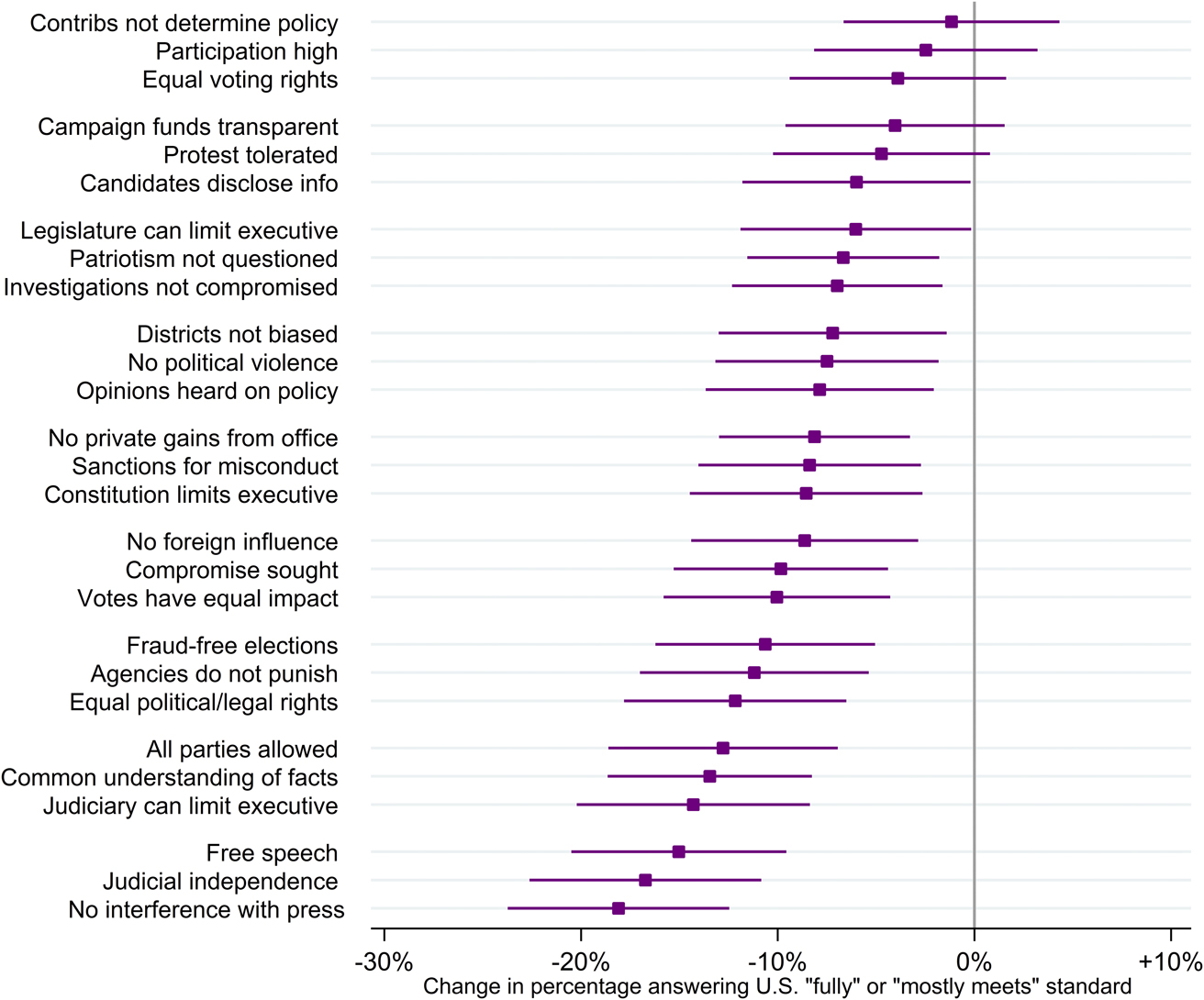
Figure 10 Changes in public ratings of performance: September 2017 to July 2018
When we separate Trump supporters and opponents by wave over the past ten months, however, the temporal dynamics are more complex. Both Trump supporters and opponents rated the performance of U.S. democracy as worse in July 2018 than in September 2017. From September 2017 to January 2018, shifts on 22 of our 27 principles were statistically indiscernible between Trump supporters and opponents, suggesting that the assessment of democratic erosion was shared even across our deepest political divide. Between January and April 2018, the pattern of modest decline continued among both groups.
But in our July 2018 survey the partisan divide over performance sharpened considerably. In this survey wave, evaluations among Trump opponents continued to drop, most sharply for principles related to judicial independence, fraud-free elections, and protest. By contrast, Trump approvers’ perceptions turned upward, registering significant jumps in performance for four principles including hot-button areas like “agencies do not punish” and “investigations not compromised.” By contrast, they did not register a significant decline in performance for a single principle. As a result of these asymmetric shifts, the gap between Trump supporters and opponents over perceptions of foreign influence in elections, which had narrowed to 31% early in 2018, spiked to 41% by July of that year. Divergence in perceptions was also particularly marked on items related to accountability, such as judicial independence, constitutional limits on the executive, and sanctions for misconduct.
Conclusion
During the past year-and-a-half, academics, journalists, public officials, and members of the public have asked urgent questions about threats to American democracy and potential sources of democratic resilience. These same questions are being posed by citizens of countries including Poland, Hungary, Turkey, the Philippines, Venezuela, and Nicaragua as observers of democracy worldwide monitor signs of democratic backsliding (Diamond 2008; Diamond and Plattner Reference Diamond and Plattner2015; Abramowitz Reference Abramowitz2018; Galston Reference Galston2018; Mounk Reference Mounk2018; Norris and Inglehart Reference Norris and Inglehart2018). A point of agreement in these discussions is that democracy is multidimensional and that backsliding seldom occurs across all dimensions simultaneously (Bermeo Reference Bermeo2016; Huq and Ginsburg 2018; Levitsky and Ziblatt Reference Levitsky and Ziblatt2018; Posner Reference Posner and Sunstein2018). Rather, democracy comes under threat in some areas at the same time that democratic practices persist in others. The fragmentary deterioration of democracy may be the result of strategic choices by would-be autocrats exploiting polarization (Graham and Svolik Reference Graham and Svolik2018; Svolik Reference Svolik2018) or voter uncertainty (Nalepa, Vanberg, and Chiopris Reference Nalepa, Vanberg and Chiopris2018), trying to cling to power (Helmke Reference Helmke2017; Luo and Przeworski Reference Luo and Przeworski2018), or avoid accountability (Frum Reference Frum2018). Either way, if we are to understand threats to democracy and recognize them when they arise, we need disaggregated measures of what we value in democracy. The BLW surveys are an effort to provide such measures. What can they tell us after President Trump’s first year-and-a-half in office?
Our surveys reveal substantial consensus on which principles are important to democracy among experts and the public. To a surprising degree, even Trump supporters and opponents largely agree about which dimensions of democracy are the most important. The top priorities are free and honest elections, the protection of equal voting, and equal political and legal rights. Institutional checks on executive authority and on the abuse of political power come next. Behavioral norms are valued, but they rate lower. We cannot adjudicate whether this ranking of priorities reflects a view of democracy that is “correct,” either philosophically or empirically, but it is clear Americans share many values in common despite their deep polarization.
But when we turn to performance, assessments begin to diverge. Our experts remain largely confident that U.S. elections are clean and fraud-free, but the public is more skeptical. Meanwhile, over time, the public is confident that equal voting rights are effectively guaranteed, but experts are more skeptical. Over time, the gulf in performance evaluations between supporters and opponents of President Trump is growing wider. It encompasses a range of important principles, including many of those that experts think matter most. On basic equality and fairness—in legal rights, voting rights, equal ballots, and unbiased districts—Trump supporters give the United States high marks, while Trump opponents see our democracy as seriously impaired.
Weingast depicted bright lines as tripwires. When self-aggrandizing leaders crossed them, the public would spring to action to defend democracy. If bright lines require a consensus about which transgressions are critical and which more tolerable, our surveys are a source of optimism. We identify substantial areas of agreement about which transgressions matter most. But self-enforcing democracy requires more. It also needs broad agreement that leaders have transgressed against one or more important principles of democracy. By this measure, our evidence is far less encouraging.
First, our results suggest that any bright line principles are likely limited to basic matters of malfeasance and accountability, not philosophically contentious questions of equality and fairness. The BLW surveys suggest that political leaders place themselves in greater peril with the public when they engage in financial self-dealing than when they undermine the independence of the courts or threaten freedom of the press. Some might endorse accountability for officials by such means as long as the threat to democratic principles were contained. The gangster Al Capone, after all, was famously imprisoned for tax fraud. And from a positive political theory perspective, having fewer bright line candidates might facilitate the defense of democracy by providing a focal principle around which opponents can coordinate (Schelling Reference Schelling1960). But in a larger sense, democratic principles are most likely to be defended successfully—or not challenged at all—if transgressions against the most important democratic principles put transgressors at the greatest risk.
Moreover, our surveys show that citizens largely disagree about whether transgressions against democratic principles are occurring. President Trump’s supporters and detractors are increasingly drawing conclusions about the health of our democracy that are not merely disconnected, but reflect an increasingly different understanding of our political reality itself. In that context, any lines that can be drawn by the public in defense of democracy are likely to be hazy at best.
Supplementary Materials
Tables A1–A4
To view supplementary material for this article, please visit https://doi.org/10.1017/S153759271900001X













